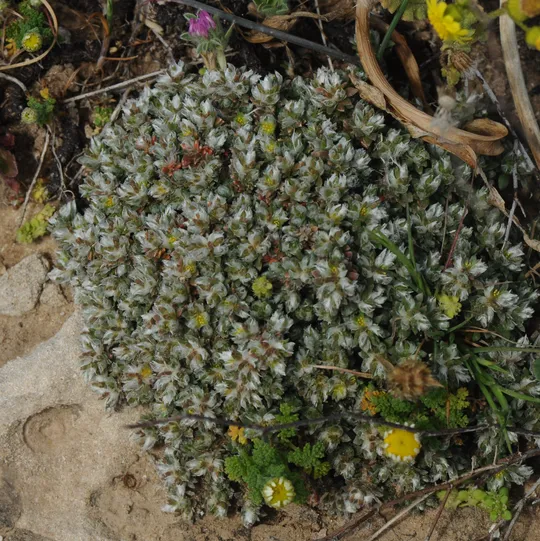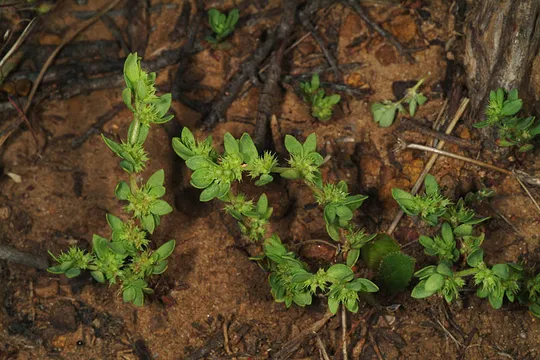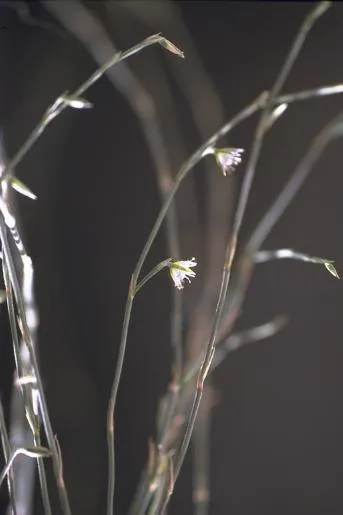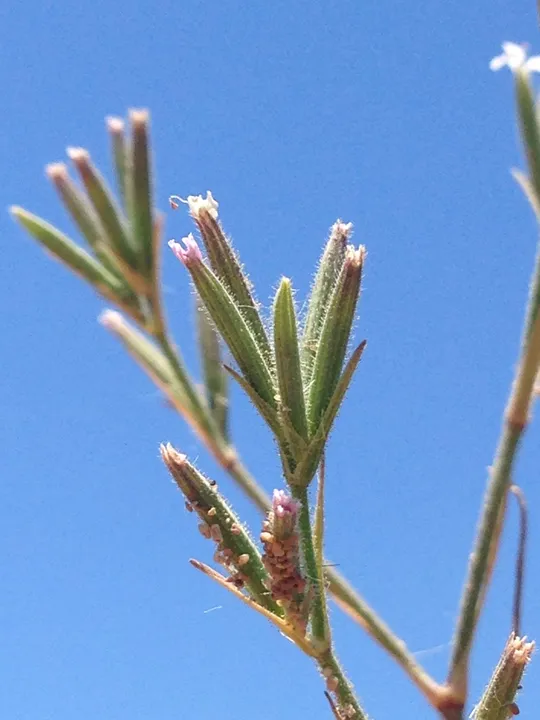Abyssinian Comet Plant
Cometes abyssinica
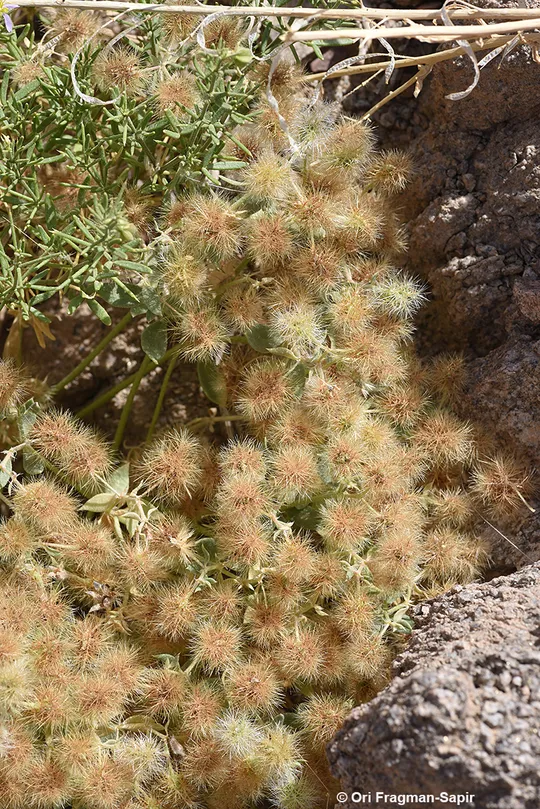
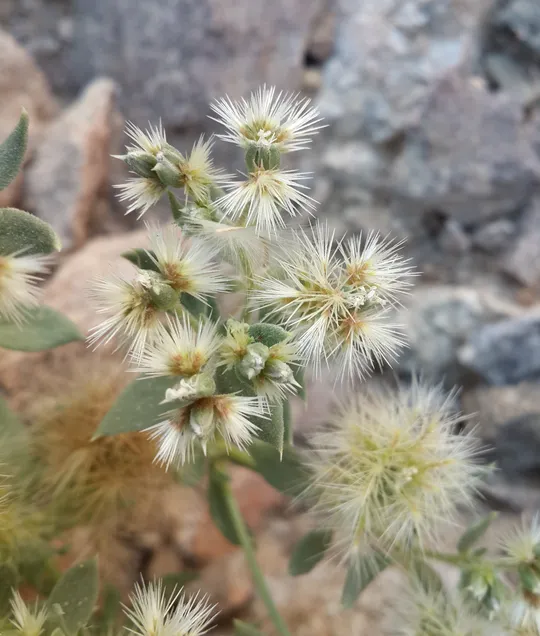
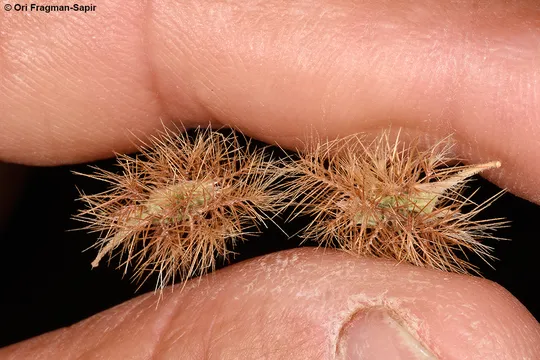
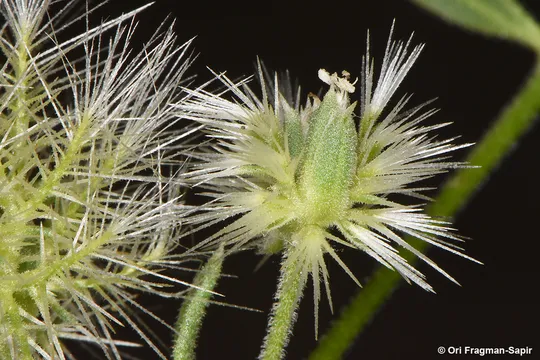
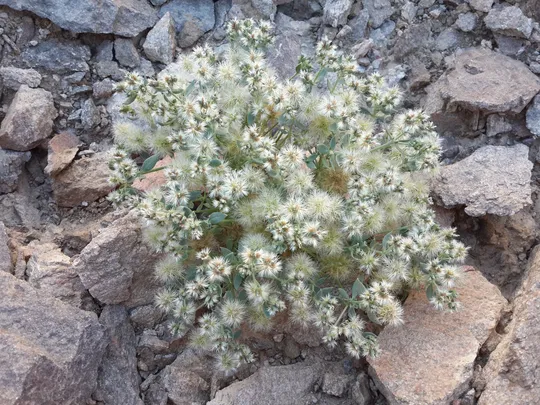
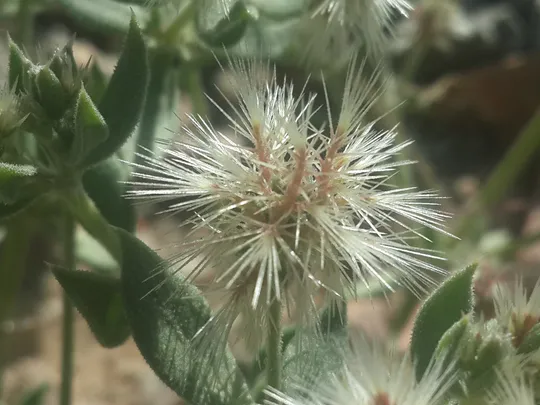
Cometes
abyssinica is found with certainly only on one site on Wadi Roded
in the Elat region of. It is estimated that there are about three sites in Israel.
Warm rocky wadi
channels with a precipitation below 40 mm, in the Elat Mountains made of igneous
and dark metamorphic rocks.
Cometes
is a small genus that consists of only two -species, which grow from Rajasthan
in western India through southern Iran and Arabia to Sudan and the Horn of
Africa. One species is a small dwarf shrub and the second species is an annual.
In terms of their fruit structure they are not close to any other Caryophyllaceae
genera, and they may represent a relictual group that grew in ancient hot
subtropical deserts and survived in the Horn of Africa and in the southern half
of Arabia. Other major species from this eco-geographic group are succulents and
fleshy rosette plants, such as Dracena, species of Aloe and
species of Caralluma and their relatives from the Asclepiadaceae. The
closest genus to Cometes in the Caryophyllaceae family is Pteranthus whose thorny
hard inflorescence is somewhat similar to the tough membranous Cometes bracts.
There is vagueness
in the literature regarding the definition of the species that grows in Israel,
as C. abyssinica
described in the Flora of Egypt (Boulos, 1999, vol.1) is described as a dwarf shrub,
woody at its base, measuring 20-45 cm, while in the Flora Palaestina the
species is described as an annual plant. Thus, according to the Flora of Egypt
and the Flora of Somalia our species is Cometes surattensis L., whose range
extends from the deserts of western India and Pakistan through southern Iran and
the Arabian Peninsula to Sinai, but does not grow at all in northeastern
Africa. This species is described as an obligate annual species with ovoid leaves
wider than 6 mm, with characteristic drooping fruit capitulum bract lobes. The
description of this fruit head does not agree with the plant located in the
mountains of Elat as illustrated in the Flora Palaestina. Field research should
be conducted in the mountains of Elat and Sinai to clarify the identity of the
species and its characteristics. It can be presumed that the life form of the
taxon found in Wadi Roded in the Elat Mountains is that of a “inter-annual”, i.e.
most of the plants die in their first year, but after a heavy rainy season, the
base of some of the plants becomes woody and the continue to live for more
years. This is a life form characteristic of additional desert species such as Diplotaxis
harra, Silene linearis, Asteriscus graveolens and Reseda muricata.
·
Cometes
abyssinica has so far been found only twice at one site in the Elat
Mountains regions, and there is no information regarding other sites or change
trends. This is an annual or an inter-annual plant that germinates only in rare
rainy years and therefore it is extremely difficult to find. Information is
lacking regarding the number of plants, population size and the soil seed bank.
·
The scant
information available makes it difficult to estimate threat factors, but the
small population observed in the extreme edges of its range, is at risk because
of its very small size.
·
The site is
located in the Massif Elat Nature Reserve.
·
C. abyssinica has a fairly broad geographic distribution in the deserts south of
Israel. It does not appear in the red species lists and there is no reliable information
on its status in other countries.
Efforts should
be invested in searching for and locating Cometes
abyssinica in the Elat Mountains after heavy rains to obtain
updated information on its status, and subsequently to formulate its monitoring
or management policy. We should consider expanding populations in refuge gardens
and populating Wadi Shlomo Mount Tsfahot, from local sources or from eastern
Sinai.
Cometes
abyssinica grows in the eastern Saharo-Arabian region in the arid
deserts of Egypt, Sinai, Sudan, Ethiopia, Somalia and Arabia. It is not found
in southern Jordan.
Cometes abyssinica is an extremely rare annual (possibly inter-annual) Sudanian plant, for
which the Elat Mountains are the northern limit of its geographical
distribution. The identity of the taxon is not fully clear.
Current Occupancy Map
| 1000 squre meter pixel | 5000 squre meter pixel | 10000 squre meter pixel | |
|---|---|---|---|
| number of observations | 0 | 0 | 0 |
| in total pixels | 0 | 0 | 0 |
| Family | Caryophyllaceae |
| Classification | On the endangered species list |
| Ecosystem | Desert |
| Chorotype | Eastern Sudanian |
| Conservation Site | Wadi Roded |
| Rarity |
1
6
6
|
|---|---|
| Vulnerability |
0
0
4
|
| Attractiveness |
0
0
4
|
| Endemism |
0
0
4
|
| Red number |
1
3.7
10
|
| Peripherality | S |
| IUCN category | DD EW EX LC CR EN VU NT |
| Threat Definition according to the red book | Vulnerable |
 Based on:
Based on:
